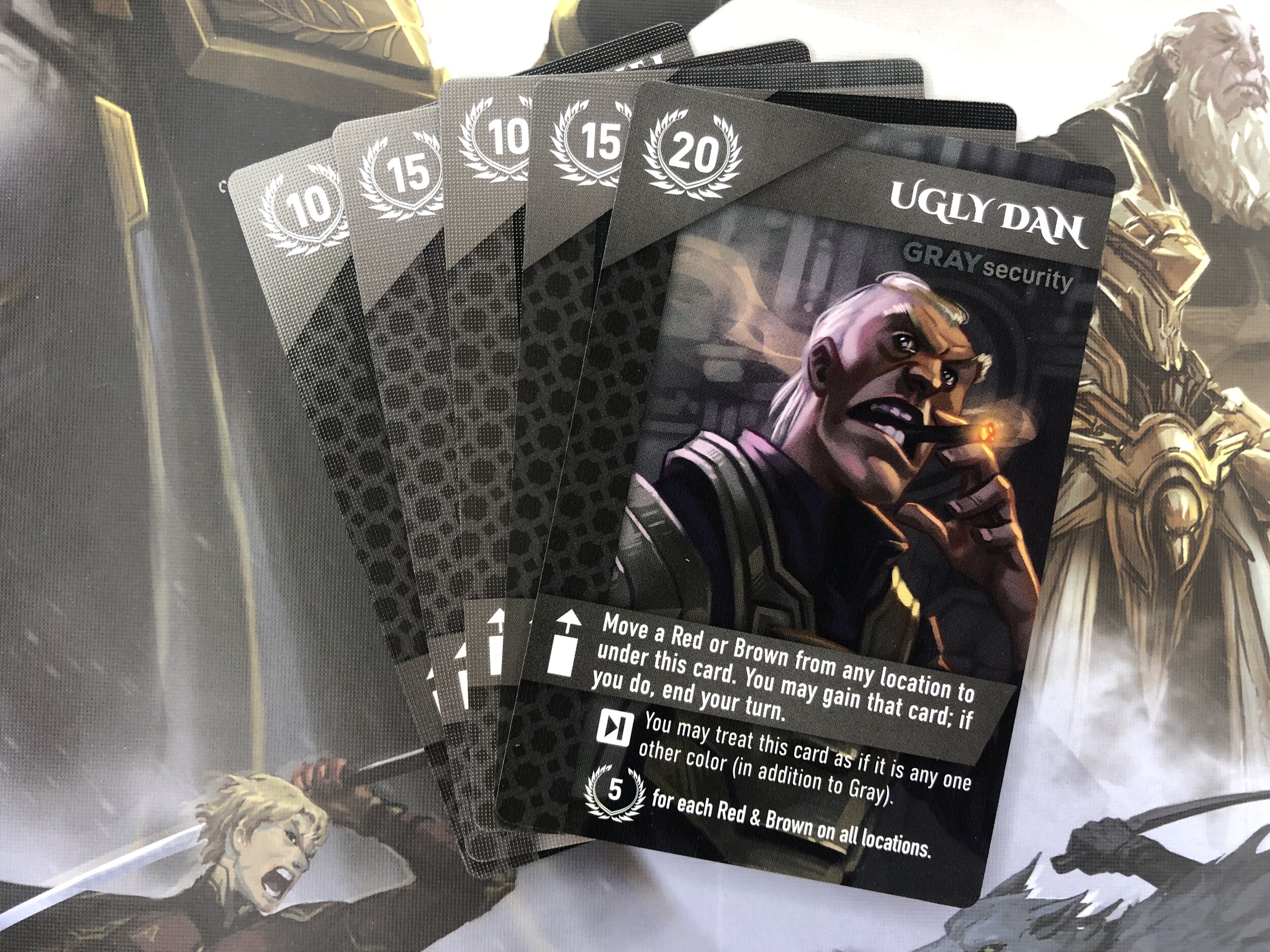Multi-Player Scaling in Red Rising
Every game plays differently depending on player count.
Increase the player count and the take that’s of zero sum games become a mutual assurance of last place. Competition over resources increases. King making, negotiating, and maneuvering around opponents become essential strategic decisions.
Some Euros maintain the same game feel as player count scales – but for most games, the strategy and feel of the game scales incidentally with player counts. This isn’t a bad thing, it adds to replayability, and can create an interesting puzzle. But, that scaling is usually incidental.
Which is why I was surprised when I played a game this past weekend that seems designed to have its strategies scale differently based on player count.
Red Rising
Red Rising is a card drafting and hand management game designed by Jamey Stegmaier and Alexander Schmidt, and published by Stonemaier Games. It’s based on the epic science fiction novels by Pierce Brown (definitely worth the read).
There are some nice design choices in the game, my favorite of which is a tension in terms of playing a card for its effect – versus holding it for end of game scoring.
Most of the cards synergize with themselves, for instance Pelus advances you on one of the victory tracks (the Fleet Track), but also scores based on where you are on that track at the end of the game. When you play the card, you risk not being able to get it back for the end of game benefit.
What really stood out to me about the design, was the inclusion of strategies that scale very differently depending on player count.
Making an Example of Ugly Dan
Throughout a game of Red Rising, players play cards to and draft cards from four locations. Over the course of a game these locations fill up with characters. The more players, the more the gameboard fills up before victory conditions are met.
Ugly Dan (and his cycle of grays) care about the number of card types on the board. Their value scales with player count.
Conversely, some cards care about position on a specific victory track (which is harder to ensure with more players), and others have standard take that effects.
These are just isolated examples, the game is chalk full of cards and strategies that scale differently based on player count.
Whether you like strategies scaling consistently with player count, or you are looking for more variability – Red Rising offers an interesting example of designers actively thinking about this kind of interplay.
When designing games how do you account and plan for multiplayer scaling?



